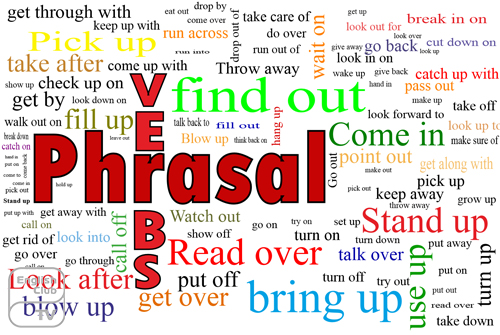In English Grammar, the ‘Verb’ constitutes of Phrasal Verbs. Phrasal Verbs make speaking and writing English a pleasure. They also highlight the meaning of the verbal or written action of a sentence more distinctive. The phrasal verb comprises of two or three parts, mainly the verb and a preposition, or verb with an adverb. One can separate these two elements and use them in sentences. But, the meaning of a sentence will vastly change when it includes a phrasal verb. English learners should be very careful when they use common phrasal verbs as they may express the wrong meaning entirely by using incorrect phrasal verbs.
The English Language contains hundreds of phrasal verbs. One verb may take on a different meaning when used with other adverbs or prepositions. For example, ‘Look at’ and ‘look into’ and ‘look after’ denotes different meanings from each other. When someone ‘looks at’ something, he or she examines the subject more carefully and widely. On the other hand, when someone ‘looks after’ something, he or she will protect the subject from harm. He or she protects and supplies the objects with at least the most essentials they need.
In this context, English learners, especially foreign learners, must not ‘look down on’ each phrasal verb that comes along in the process of their learning. However, it is in the opinion of English professionals that beginners of English learning may understand Phrasal Verbs as they use the language. Therefore, they say to have them indulge in the practical use of the language rather than lectures on Phrasal Verbs. It may be true with the more common phrasal verbs. So what are the most commonly used English Phrasal Verbs? ‘Looking at’ them will undoubtedly provide for English learners their forms and their usage.
Common Phrasal verbs, too, have three grammatical differences. Some phrasal verbs are separable. For example, one can write or talk by using the phrasal verb ‘bring up’ without using it together like ‘The mother will bring her children up on the farm’. Here, the phrasal verb ‘bring up’ takes two separate positions in the above sentence. So it is a separable phrasal verb. Likewise to name a few, some of the breakable phrasal verbs include ‘call off,’ ‘do over,’ ‘hold on,’ ‘find out,’ ‘go away,’ ‘hold up,’ ‘leave out,’ ‘look over,’ ‘make up,’ ‘pick out,’ and ‘hang up.’
On the other hand, some phrasal verbs cannot be used for breaking their parts. For example, one cannot use the phrasal verb ‘call on’ separately, like shown in the above paragraph. In this sentence, ‘The mother ‘calls on’ her children’. One cannot use ‘calls’ separately from ‘on’ like ‘the mother calls her children on’ because it does not give the intended meaning. Here’s a few from a long list of such phrasal verbs that includes ‘go over,’ ‘go through’ ‘run into’, ‘wait on’, and ‘run across’. Some phrasal verbs contain three parts. Examples from a long list, include, ‘come up with’, ‘cut down on’, and ‘drop out of’. Also, note that a category of phrasal verbs called ‘intransitive phrasal verbs’ do not use objects. One example is ‘catch on’.









